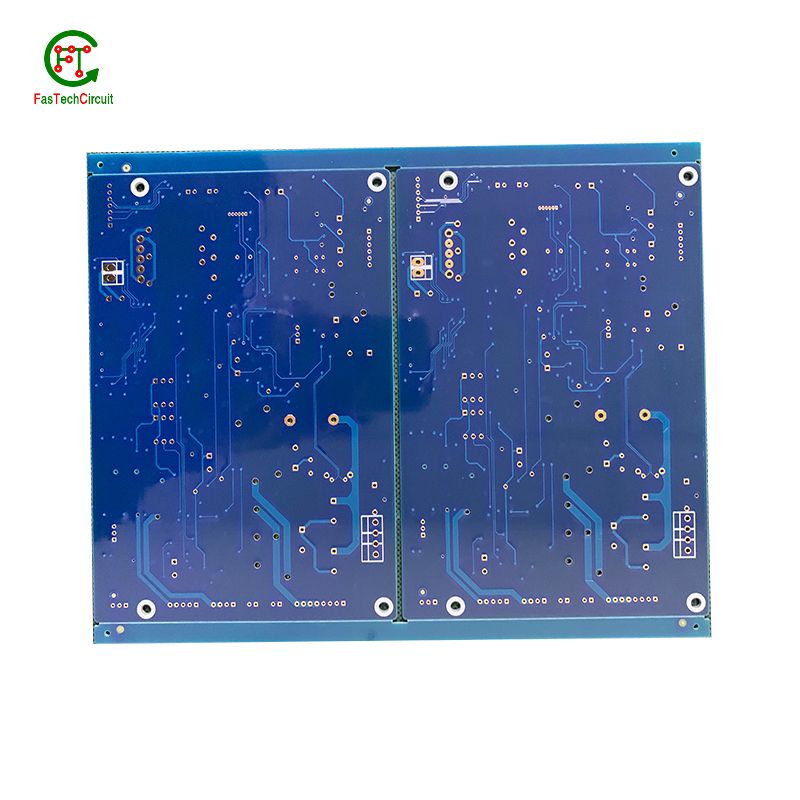Empowering the Future: Exploring the Realm of Smart Electronics PCB
In an era defined by technological innovation, smart electronics have emerged as the driving force behind a myriad of cutting-edge applications. At the heart of these intelligent systems lies the Smart Electronics PCB (Printed Circuit Board), an intricate and versatile component that revolutionizes the way we interact with technology. In this article, FasTechCircuit delve into the world of Smart Electronics PCBs, unveiling their significance, capabilities, and their transformative impact on industries and daily life.
Hot Tags: More PCB products
Defining Smart Electronics PCBs
A Smart Electronics PCB goes beyond the traditional functions of a circuit board. It incorporates advanced technologies such as sensors, microcontrollers, wireless communication modules, and even embedded AI, enabling it to process data, make decisions, and interact with the environment. These capabilities empower devices to be responsive, adaptive, and often autonomous.
The Significance of Smart Electronics PCBs
(1)Internet of Things (IoT) Revolution: Smart Electronics PCBs are the backbone of the IoT ecosystem, connecting devices, sensors, and platforms to create a network of intelligent communication. This has given rise to smart homes, smart cities, and Industry 4.0.
(2)Data Processing and Analysis: These PCBs enable devices to collect, process, and analyze data in real-time, paving the way for predictive maintenance, data-driven insights, and enhanced decision-making.
(3)User Interaction and Experience: With embedded sensors and touch-sensitive interfaces, Smart Electronics PCBs enable seamless interaction between humans and technology, contributing to user-friendly and intuitive experiences.
(4)Energy Efficiency: Smart Electronics PCBs optimize energy consumption through intelligent algorithms, making devices more eco-friendly and sustainable.
Applications Across Industries
(1)Healthcare: Wearable devices equipped with Smart Electronics PCBs monitor vital signs, track health metrics, and even administer medication, revolutionizing personalized healthcare.
(2)Automotive: In autonomous vehicles, Smart Electronics PCBs manage sensor data, facilitate communication, and enable advanced driver assistance systems.
(3)Consumer Electronics: From smart appliances to voice-controlled assistants, these PCBs enhance convenience and connectivity in everyday life.
(4)Industrial Automation: In factories and manufacturing, Smart Electronics PCBs power robotics, monitor production processes, and enable remote control and diagnostics.
(5)Agriculture: Smart PCB-equipped sensors in agriculture provide real-time data on soil conditions, weather patterns, and crop health for optimized farming.
Challenges and Future Outlook
As Smart Electronics PCBs continue to evolve, challenges such as power efficiency, data security, and standardization emerge. However, ongoing research and advancements in nanotechnology, flexible substrates, and efficient energy harvesting solutions hold the promise of addressing these challenges.
In the future, Smart Electronics PCBs are set to play an even more integral role as we transition towards a hyper-connected world. With 5G connectivity, edge computing, and AI-driven innovations, these PCBs will contribute to an ecosystem where virtually every device is part of an intelligent network.
In conclusion, Smart Electronics PCBs epitomize the fusion of electronics and intelligence, empowering us to achieve feats that were once deemed science fiction. From healthcare to manufacturing, their impact spans diverse sectors, reshaping industries and enhancing our quality of life. As we embrace the era of smart technology, Smart Electronics PCBs stand as the pillars that support our journey into an intelligent and interconnected future.
RELATED NEWS
pcb board manufacturing How To Contact US
PCB from 1 to 30 layers, HDI, Heavy Copper, Rigid-flex board with "pcb board manufacturing One-Stop" service.






